What Kind Of Animal Is A Martin
Arctic animals include mammals such as the polar behave, Chill play tricks, Arctic hare, caribou / reindeer, musk ox and wolverine; aquatic mammals such every bit the orca / killer whale, narwhal, beluga whale, walrus and numerous seal species; and birds such as the ptarmigan, bald eagle, Chill tern and puffin.
On this folio, you'll find pictures and facts on these and many other Arctic animals.
Despite being one of Earth's most hostile environments, the Arctic is dwelling to many different species. Many of the Arctic animals on this list have special adaptations that enable them to live either on the frozen Chill tundra or in the icy waters surrounding the North Pole.
Examples of creature adaptations for living in the Arctic include:
- thick, multi-layered coat;
- fur that changes color with the seasons (providing camouflage against the snow in winter, and the rocky tundra in the summer);
- layers of trunk fatty to provide insulation;
- seasonal migration betwixt feeding and breeding grounds;
- hibernation during the coldest months of the year;
- big body size (with a proportionally smaller surface area through which heat tin be lost);
- minor extremities (such every bit ears, nose, etc.) through which rut can exist lost.
This listing of Arctic animals includes non only species that live inside the Chill Circle, only likewise those that live in the subarctic (the area immediately south of the Chill Circumvolve).
Yous tin can click on the pictures to discover more facts and figures about many of the animals.
- View / download a FREE Arctic animals worksheet for this folio here: Free Printable Worksheets.
- Want to know more virtually the Arctic? You'll find all of the facts on this page: Arctic Facts.
- Want to see animals from the South Pole? Bank check out this folio: Antarctic Animals
- Become an animal adept!: Animals: The Ultimate Guide to the Fauna Kingdom.
Arctic Animals List
A list of Arctic animals with pictures and facts. Click on the pictures or follow the links for further information about an animal.
Arctic Play a trick on
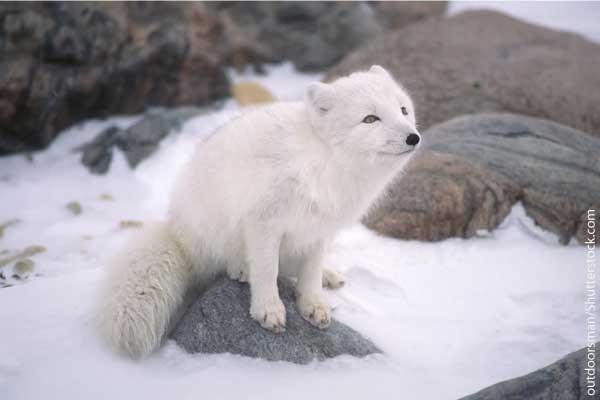
The Arctic Fox has several adaptations for living in the Arctic environment. The nearly obvious of these is its thick fur, which changes color from brownish in the summer to white in the winter. The fox'south glaze provides both insulation and cover-up.
- You lot can find out more near the Arctic fox hither.
Arctic Basis Squirrel
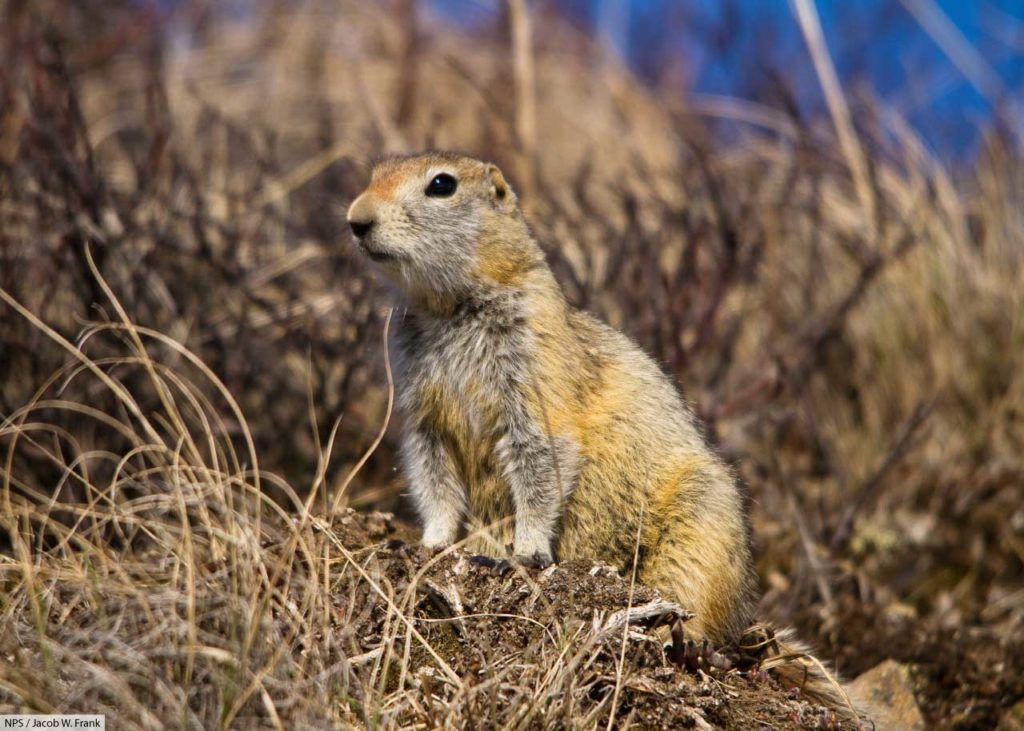
This small Arctic rodent is constitute in Alaska, Canada and Russian federation. In society to survive the harsh northern wintertime, it hibernates in a couch.
In fact, the Arctic basis squirrel has one of the longest hibernation periods of any animal, remaining inactive for two thirds to iii quarters of the year!
- Find out more than about this species here: Arctic Ground Squirrel Facts
Chill Hare
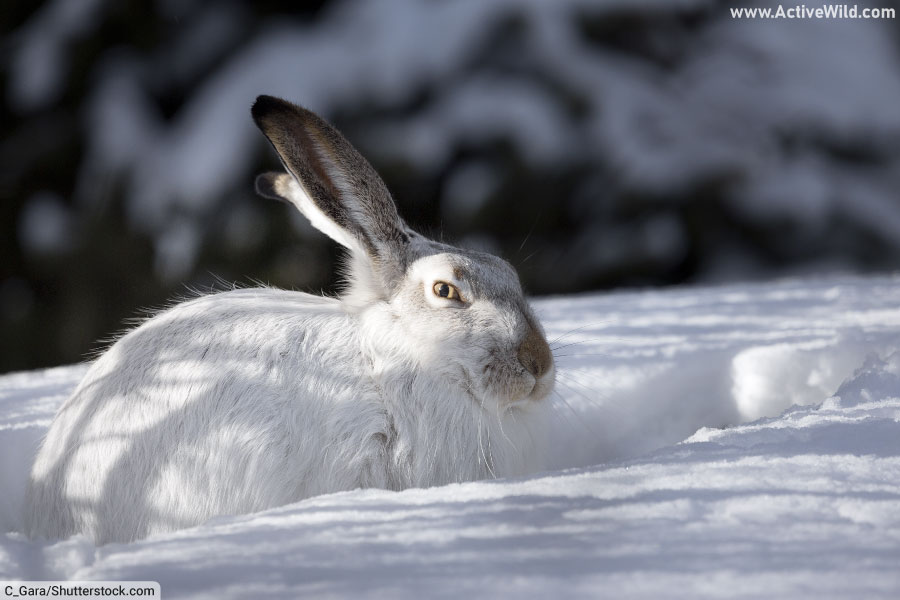
Arctic Hares have smaller noses and ears than other hares; this prevents oestrus from existence lost from these uninsulated areas. twenty% of their body is fat – some other adaptation for living in extreme Chill atmospheric condition.
However, all that additional insulation doesn't slow them down. These speedy lagomorphs* are able to reach speeds of up to 60 km/h (40 mph)!
* A lagomorph is a member of the gild Lagomorpha, the animal group that contains hares, rabbits and pikas.
- You can find out more than about Arctic hares here: Arctic Hare Facts.
Arctic Tern
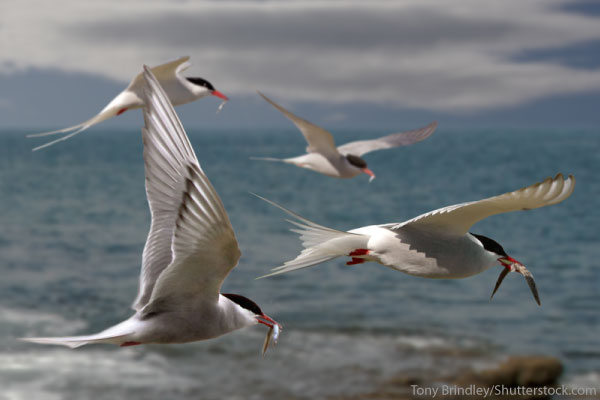
The Arctic Tern is one of nature's true voyagers. Flying over nineteen,000 km in a year, these incredible birds run into more daylight hours than any other animal, and feel two summers every year.
Arctic Wolf
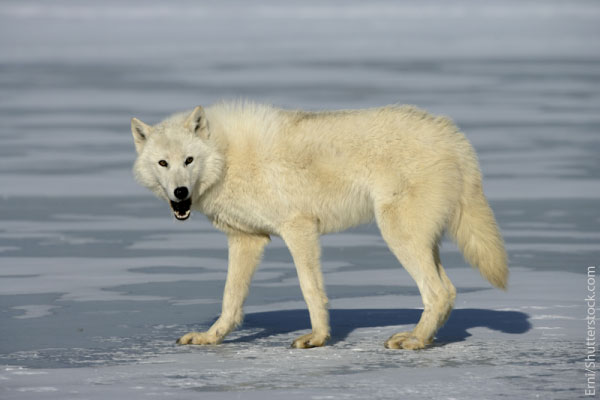
One of our favourite animals on the Arctic animals listing, the Arctic Wolf is found in Canada'south frozen northward. This Grey Wolf subspecies is smaller than the similar N-Western Wolf (another wolf subspecies) and has narrower features.
Believe it or not, the Chill wolf is the same species every bit your pet domestic dog! Domestic dogs and Arctic wolves are both subspecies of Grey wolf, Canis lupus.
Due to its Arctic habitat, the Arctic Wolf has been hunted by humans less than other wolves.
Bald Eagle

The Baldheaded Eagle is both the national bird and the national animal of the USA. It is found non just in the Chill, but also in a variety of other habitats throughout Due north America, from Canada to northern Mexico.
The baldheaded eagle is a member of the genus Haliaeetus, a group of eagles also known as 'sea eagles'. Fish forms the majority of the bald eagle's diet.
- You can read more near bald eagles here.
Beluga Whale
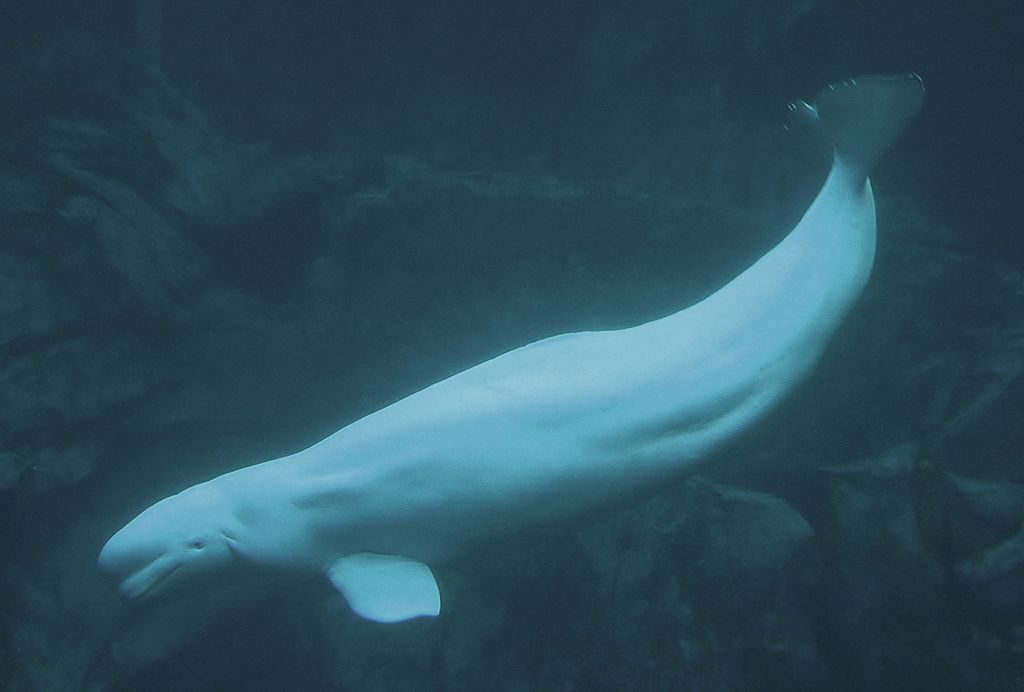
The beluga whale is establish around the coasts of Russia, North America and Greenland. It is a highly social species, usually living in small pods of around 10 animals.
The pure white color of the beluga whale provides camouflage when it is swimming under the Arctic ice.
- Acquire more than about Beluga whales hither: Beluga Whale Facts.
Caribou / Reindeer
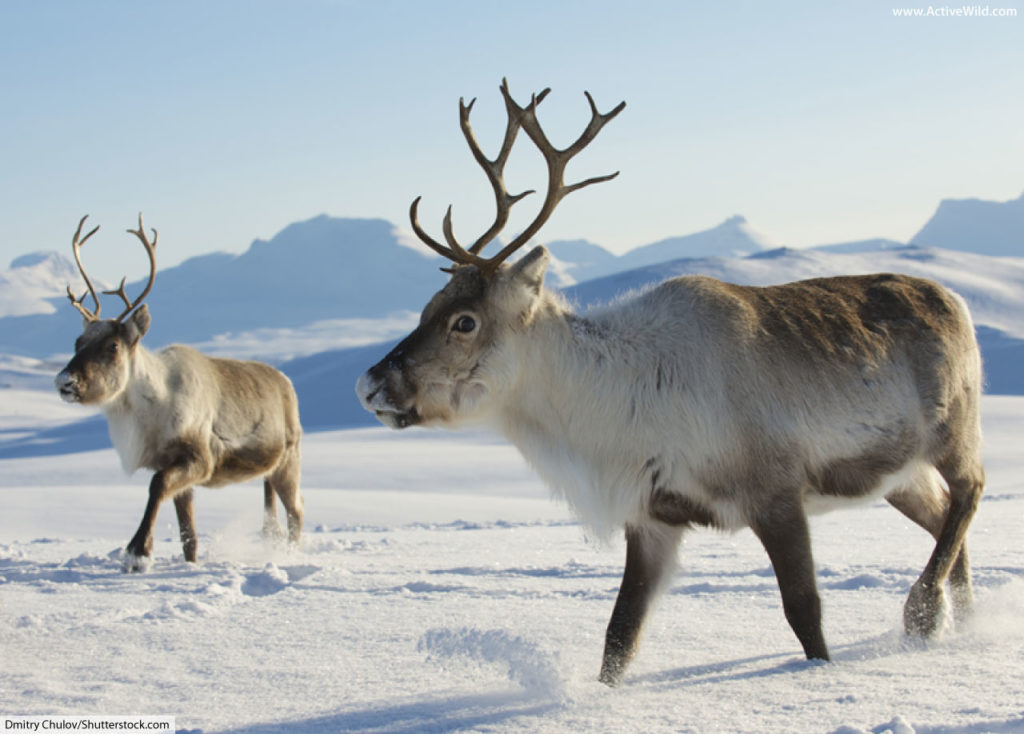
Caribou are as well known equally reindeer, especially in Europe. These hardy animals take several adaptations for living in a cold-climate, including enlarged chambers in the nose (to warm up the cold Chill air) and hooves that get both smaller and harder in the wintertime – providing improved grip in the water ice and snowfall.
Herds of caribou in North America brand the longest migration of any country mammal.
- Find out more about caribou here: Caribou Facts.
Dall Sheep
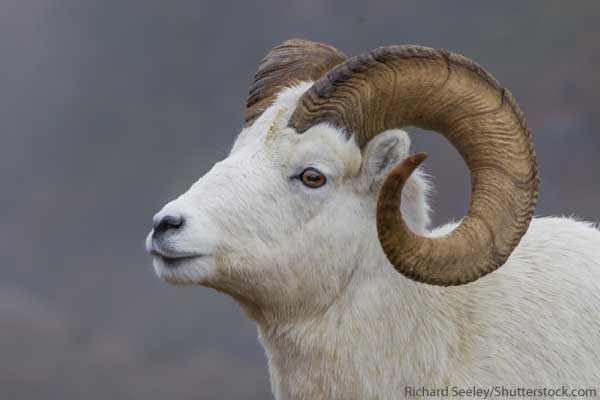
The Dall Sheep is plant in Subarctic areas of Alaska and Canada. Information technology lives in rocky, mountainous regions, and is an excellent climber.
- You can find out more about the Dall sheep here: Dall Sheep Facts
Ermine / Stoat
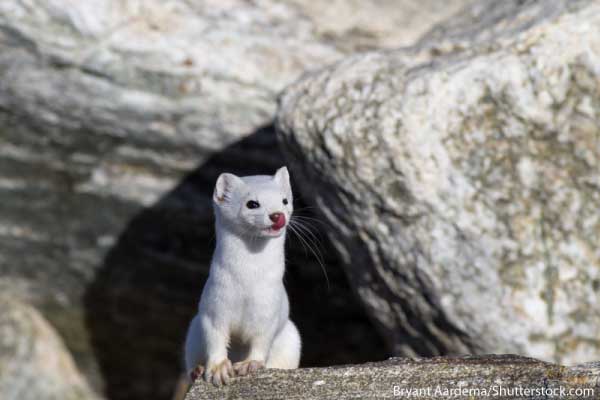
The Stoat, or Ermine, is a member of the weasel family. (The proper name 'ermine' is sometimes only used to refer to the animal while in its white winter coat.)
Although small, stoats are good hunters, capable of preying on animals (such equally rabbits) considerably larger than themselves. Stoats will frequently live in the burrows of their victims rather than digging their own.
- Yous can find out more than about the stoat hither: Stoat Facts
Greenland Shark
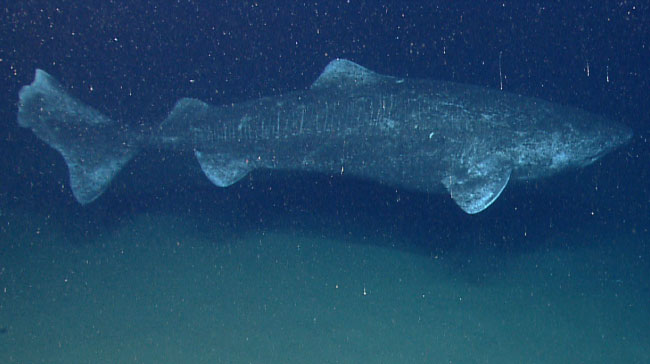
Native to the Due north Atlantic Bounding main effectually Canada and Greenland, Greenland sharks live farther northward than any other type of shark. Greenland sharks are rather tedious swimmers and adopt to grab prey while information technology is sleeping. They also scavenge food left by other predators.
- Learn more almost Greenland sharks hither: Greenland Shark Facts.
Harp Seal

The harp seal is born with a yellowish glaze that turns white after iii days. Equally the creature gets older it becomes silvery-gray.
Harp seals have a thick coat of blab to keep them warm. Their flippers act as heat exchangers, cooling them downwards in the summer and warming them upwards in the wintertime.
- You tin can observe out more nigh Chill seals hither: Arctic Seals List with Pictures & Facts
Lemming
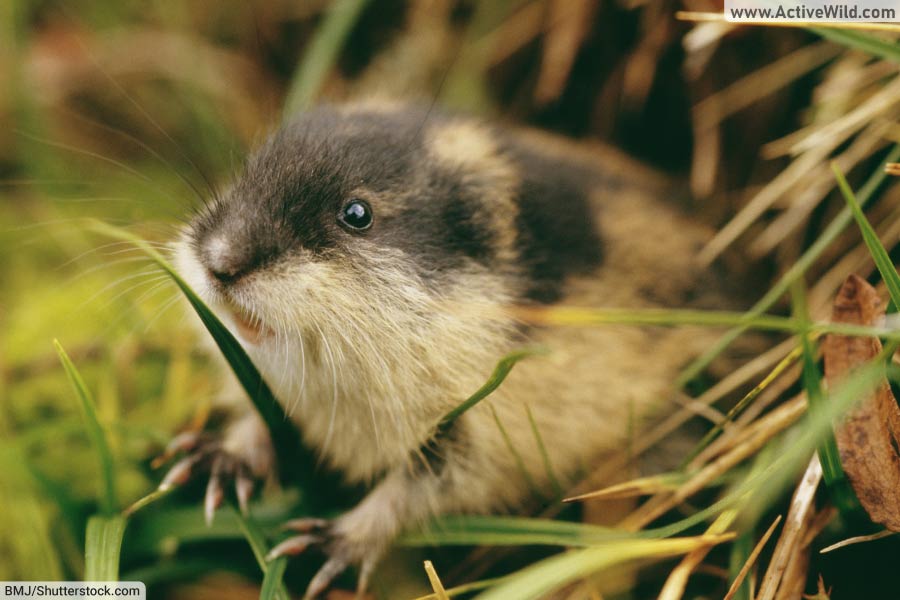
Lemmings are minor rodents with long, soft fur. They are herbivorous, and eat grasses, roots, and leaves. Lemmings remain active during the winters rather than hibernating. They stock up on grasses earlier the wintertime, and burrow under the snow to notice nutrient.
- You can acquire more virtually lemmings hither: Lemming Facts.
Moose
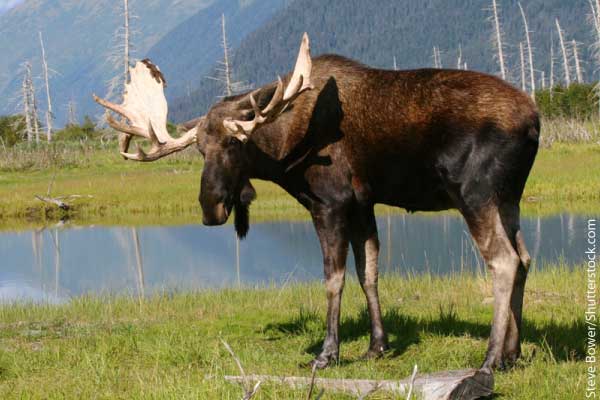
Moose are the largest members of the deer family. These large-antlered animals are most commonly constitute in Alaska, Canada, Russian federation, and Scandinavia. Moose are unique amid deer in that they are solitary and don't alive in herds.
Although commonly wearisome moving, moose can go agile and ambitious when frightened or angered.
- Discover more nigh moose hither: Moose Facts.
Musk Ox
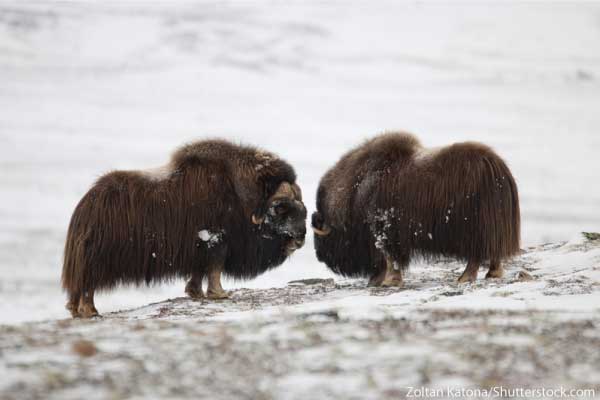
During the mating season, the male Musk Ox produces a musky scent to concenter females, which is how the animals become their proper name. Musk Oxen accept thick fur coats to keep them warm. Both males and females have long, curved horns.
- You lot tin find out more nearly the musk ox here: Musk Ox Facts.
Narwhal
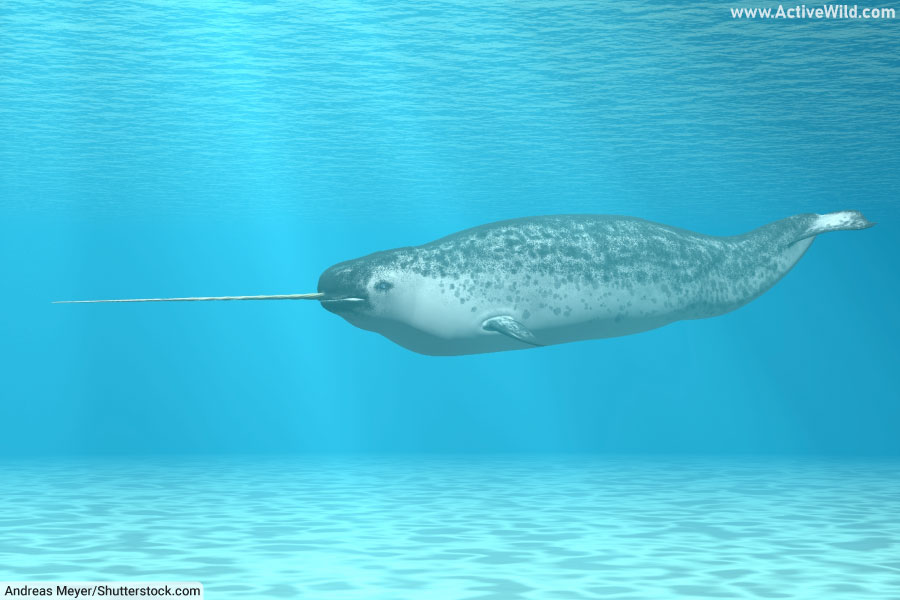
Narwhals are medium-sized whales with ane highly distinguishing feature: a long tusk that projects from the front end of their heads. The tusk is in fact an extended front molar. Narwhals spend the whole year in the arctic waters surrounding Russian federation, Greenland, and Canada.
- Y'all tin read more than narwhal facts here.
Orca
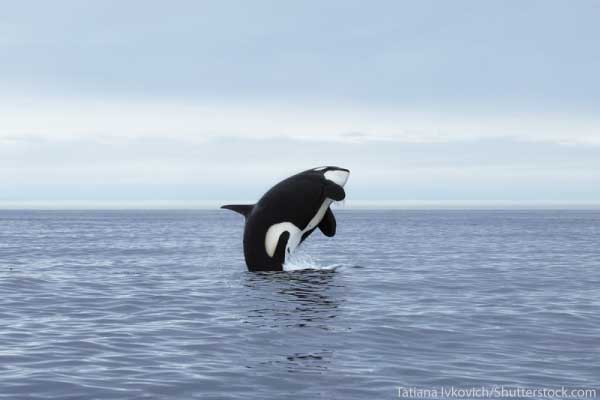
Also known as the killer whale, this toothed whale is a member of the dolphin family. Orcas have distinctive black backs and white chest and eye patches. Orcas prey on other marine creatures, often working in a group. Orcas are apex predators, having no natural predators themselves.
- Notice out more than orca facts here.
Polar Deport
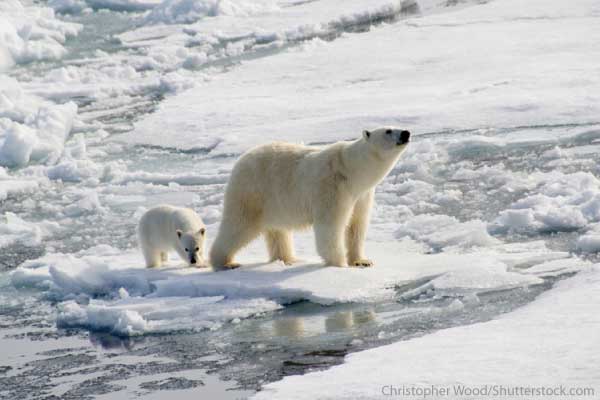
No arctic animals list would be complete without the polar bear. Polar bears are marine mammals. They are able to swim long distances in cold waters and are likewise fast movers on the land. Polar bears are the largest type of acquit.
- Find out more almost these awesome Arctic animals here.
Ptarmigan

Ptarmigans have white feather during the winter which provides camouflage confronting the snow. Ptarmigans feed on fruit and berries in the summer, and forage for food nether the snow in winter.
Ptarmigans are also known equally 'rock ptarmigans' and 'snow chickens'.
Puffin
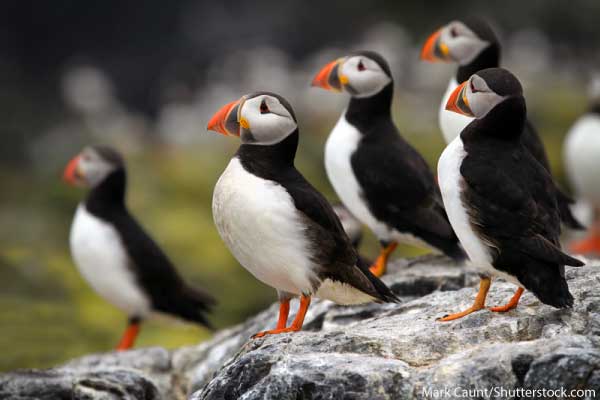
Puffins are birds that are built for swimming as well every bit for flight; their short wings propel them through the water as well as through the air.
Puffins have black and white feathers and brightly-colored bills. They spend nigh of their lives far out at body of water, but for a few months each yr gather on cliffs to form breeding colonies.
Ringed Seal
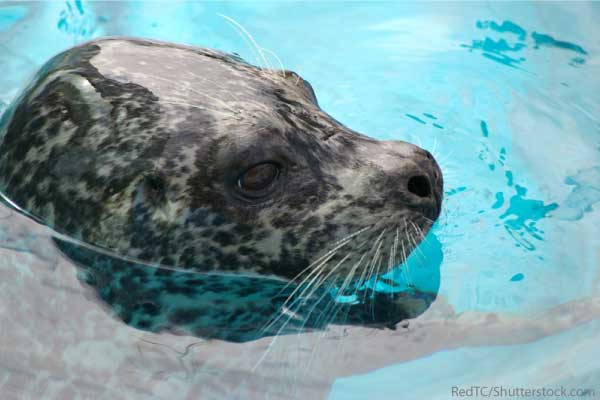
The ringed seal is the virtually common seal found in the Chill. 1 of the smallest species of seal, it has a small, cat-like head and a plump torso.
The ringed seal gets its proper noun from its coat, which is brown with silver rings on the back and side. The ringed seal preys on small fish.
- Yous can discover out more about the ringed seal here: Ringed Seal Facts
- You can find out more about Arctic seals hither: Chill Seals Listing with Pictures & Facts
Sea Otter
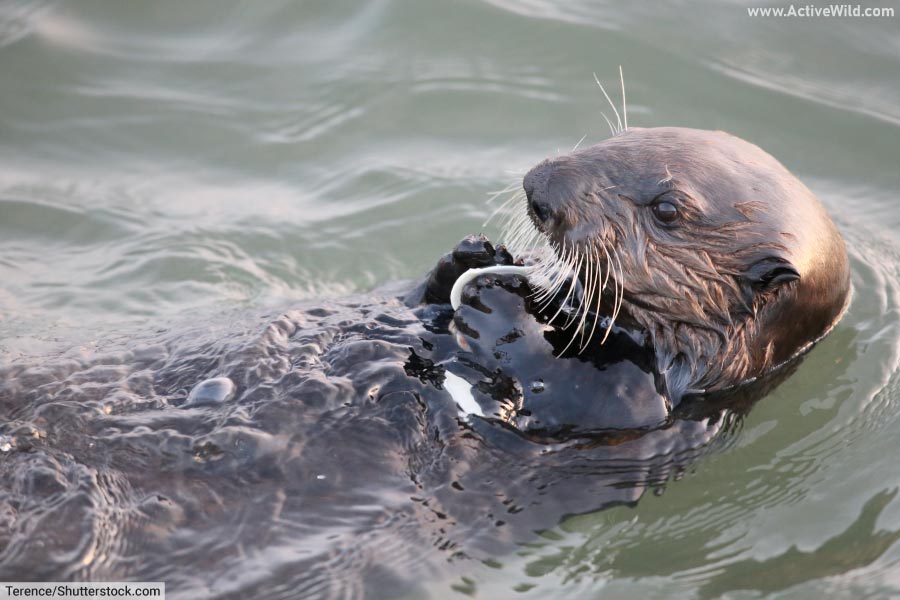
Ocean otters are the heaviest mustelids (members of the weasel family, Mustelidae), but are one of the smallest marine mammals. Sea otters take thick fur coats for insulation, and they tend to spend more than fourth dimension in the h2o than on the land.
- Find out more well-nigh sea otters here.
Snow Goose
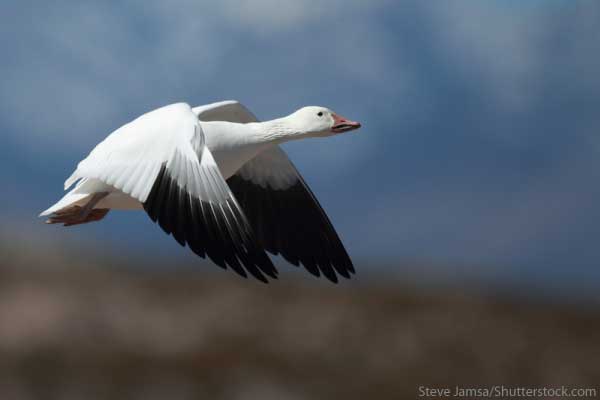
Snow geese enhance their immature in northern America and Canada at the start of summertime, then migrate south in the winter.
Snow geese frequently stop to feed on crop fields during their migration. Their bills are adjusted for excavation roots out of the basis.
Snowshoe Hare
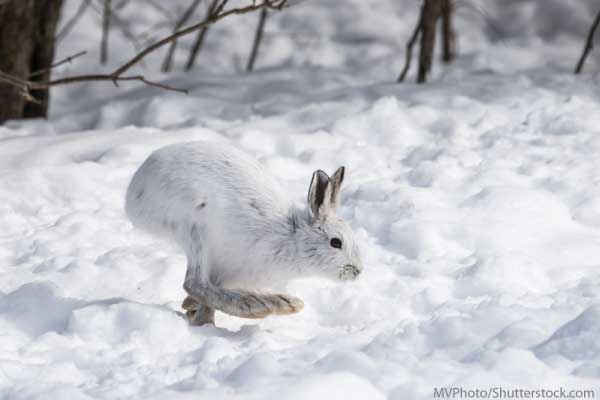
The snowshoe hare'southward coat changes color from brown in the summer to white in the winter. This provides twelvemonth-circular camouflage.
The species gets its name from its large, furry-soled hind feed. They are adapted to prevent the hare from sinking into the snowfall.
- Notice out more about the snowshoe hare here: Snowshoe Hare Facts.
Walrus

The walrus is like shooting fish in a barrel to recognise with its large tusks, long whiskers, and short flippers. These large, heavy creatures used to be hunted for their meat and fat. This practise has at present been banned in order to protect the species.
- Want to find out more almost walruses? Click to visit our walrus facts page.
Wolverine
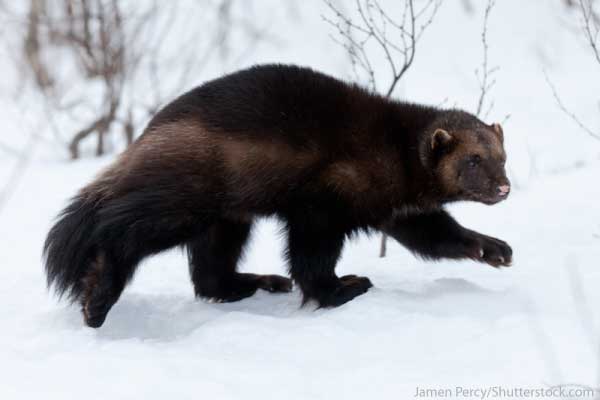
The wolverine has a well-deserved reputation for being a ferocious predator that isn't agape to have on animals bigger than itself. Similar the body of water otter (meet above), the wolverine is a member of the weasel (mustelidae) family.
- You can acquire more than well-nigh the wolverine hither: Wolverine Facts.
Arctic Animals Listing: Decision
We promise that you've enjoyed this list of Chill animals.
Now that you've met the region'southward wild fauna, why not discover more about the Arctic itself? You lot'll find some incredible facts here: Arctic Facts.
You can find out about the animals of the Southward Pole here: Antarctic Animals Pictures and Facts.
Or, accept a look at our other beast lists pages:
- African Animals List
- Endangered Animals List
- Rainforest Animals List
- Australian Animals Listing
- Animals: The Ultimate Guide
- Animals A to Z
Source: https://www.activewild.com/arctic-animals-list/
Posted by: snowgiviled.blogspot.com

0 Response to "What Kind Of Animal Is A Martin"
Post a Comment